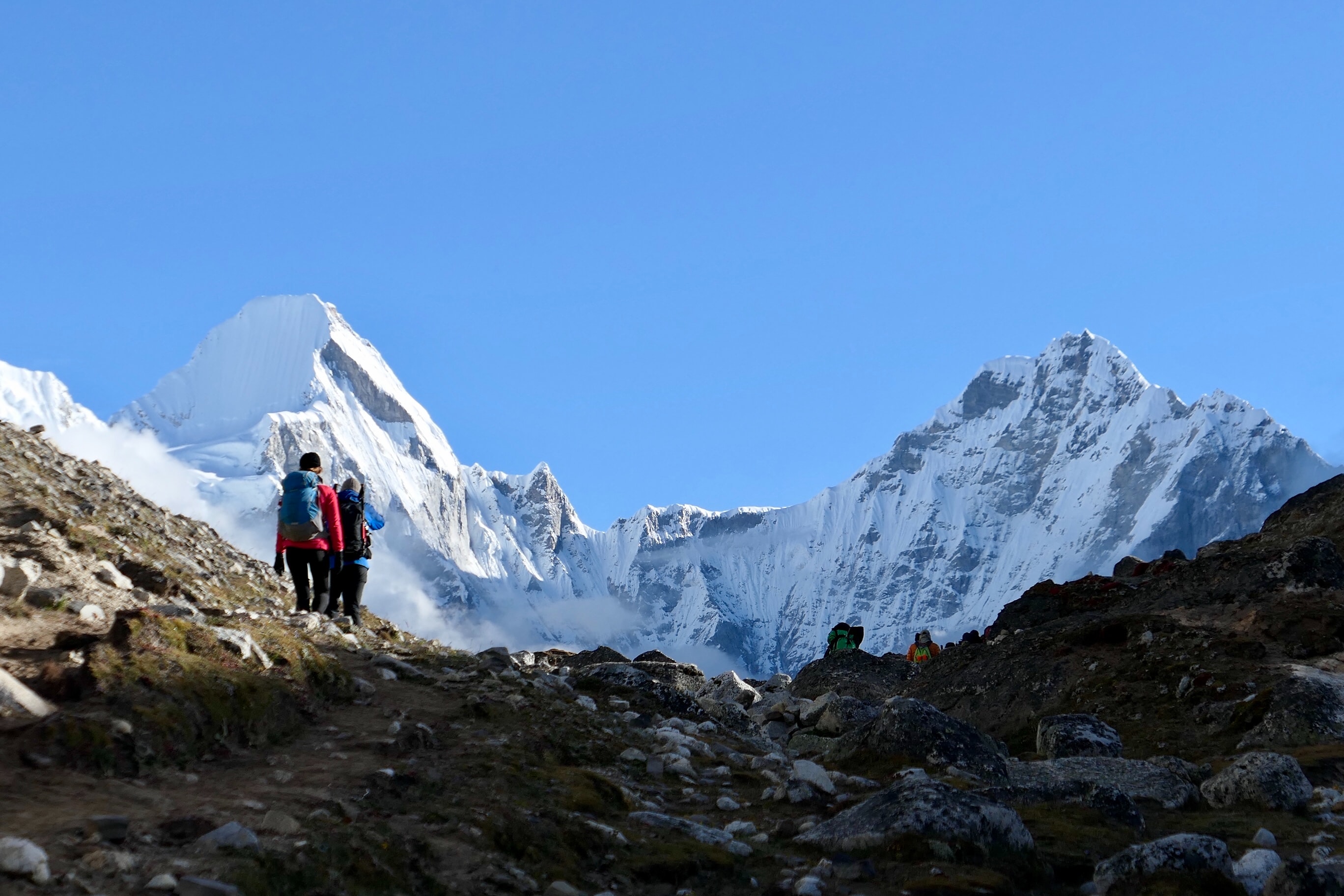
Stress and Self-sabotage on the Way up to the Top of the World
“The game had just started! A game of patience and strategy with the highest mountain in the world. We had already reached Camp 2, (6400m), and in the following days we would climb Lhotse Face, touch Camp 3 (7300m), and then descend. We were so close to concluding our third and last acclimatisation rotation, when we received a radio call by dinnertime. Our expedition leader, Mike Hamill, informed us that the forecast had changed dramatically and strong winds were expected for the following days. He would decide we should return to base camp as early as possible the next morning. I am, in this very moment, in the safety of Base Camp, and all I can do is take care of myself physically and emotionally”.
These were the words I wrote in my travel journal on May, 3rd 2019. Three days later I was groaning in pain deep inside my tent and my expedition was hanging by a thread.
My first impression of Everest Base Camp was weird. I had imagined EBC set in a wide flat open area, but what I found was a very rough and rocky terrain. On the other hand, it is surrounded by some of the highest mountains on Earth, boasting a powerful magnificence and beauty that intimidate and fascinate at the same time. But what catches our eye the most, hypnotising, delighting and intimidating, is Khumbu Icefall, descending like an ice tongue, gorgeous and lethal. Camps are set on its lower banks.
The usual planning to climb Everest comprises three acclimatisation cycles. First and second rotations were concluded successfully. But only one thing bothered me: “I hope to suffer less on the Icefall on my next rotation”. It was the first time I associated the mountain to suffering.
I was unaware, but I had created a crack on my protective body and mind armour. My efforts were now linked to suffering. And suffering is to be avoided. A feeling of complaint was somehow conscious and I could avoid it. Now one thing I was not aware of - and therefore could not avoid - was another argument, this one deeper, forbidden and unconscious, was being plotted in that hidden underground place in my mind: “What if I got hurt?”
Having come to terms, I prepared myself for redoing the third rotation.
While we went down the short gravel path between our camp and the beginning of the icefall, maybe for neglect, lack of concentration, overconfidence, anyway, I slipped. I felt a pinch on my lower back and so I fell down. Feeling angry, I cursed my lack of care. Being so familiar as I am with my moody lower back, I had no doubt and said: “Pasang, I felt a pinch on my lower back. We can go back to the tent. I cannot continue today.”
Later that afternoon, I faced reality: my expedition to Everest may have come to an end.
In that moment I managed to text my wife Juliana. With all her love, but pragmatism too, she suggested some exercises of a Japanese healing technique. I also texted a friend, Alan Arnette, an experienced American mountaineer whom I had the chance to interview for my Master’s thesis from the Executive Master in Change at INSEAD, titled “Making decisions in thin air: traps and strengths in the minds of Everest summiteers”. Alan felt very sorry for my situation, but quickly sought a solution. He said that if I were truly injured, I could pack up and go home. But if I had been hurting myself, I still stood a chance.
One of the traps I highlighted in my thesis was the “status quo trap” which lies deep within our psyches, in our desire to protect our egos from damage. By trying to avoid suffering, was I a victim of the “status quo trap”?
What Alan meant, I believe, was: should there be an unconscious mental component that triggered this process, I had to identify it and disarm the mechanism.
I believe that underneath the surface I fell victim of an unconscious self-sabotage, which was acting as a “status quo trap”.
Getting hurt, falling sick and not having to face the fear of failure seemed pretty convenient, after all I would not be the one to blame. What a relief! What an honourable way out! I could go back home with dignity. On the other hand, it is so frightening how far such defense mechanism goes.
I am not sure whether I was dreaming when I thought to myself: I must switch the “Oh my God! One more day on Khumbu Icefall” for “Thank you God for one more day on Khumbu Icefall”. This new perspective brought another element to the game of patience and strategy: hope. Three days after my fall, I was unbelievably on my feet. I still had a long way until I fully recovered, but I was back in the game!
On May 22nd 2019, at 03:11 am, I set foot on the summit of Mt. Everest with my sherpa guide, Pasang.
I consider my experience in Everest as an “in vitro” experiment to the adversities we all face in our lives and I tried to translate this journey of overcomings into some behaviours:
- Face the “inconvenient” truth: It was when I became aware of my vulnerability that I found my real strength and courage.
- Bring different perspectives: The way I could disarm the trap that self-sabotage set for me was by facing the pain from the perspective of hope.
- Share your pain: Particularly difficult for me, if I had not searched for help and shared my pain with my family and friends I would not have made it.
- Be oriented by the ‘task of the day’: Carrying out the ‘task of the day’ focus was an efficient way to control anxiety.





